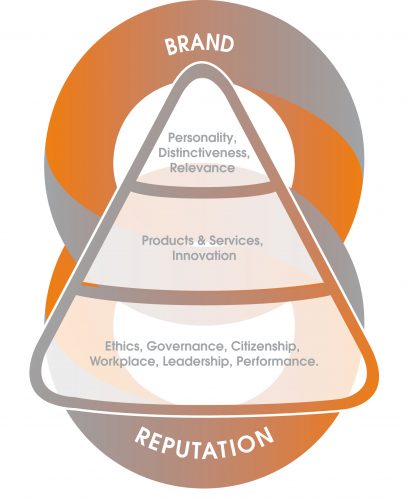
5 reputation management tips for 2016
- Plan for the fact that managing your CEO’s reputation is part of managing your corporate reputation.
There are many examples that demonstrate how the behaviour of a CEO can serve as a catalyst for the unraveling of a corporate reputation, which in turn can lead to value destruction, loss of business and more (e.g. Co-op Bank, Worldcom, Enron, OGX(Bastida)). And plenty of others that show a positive CEO reputation can enhance a corporate reputation (e.g Steve Jobs, James Dyson, Liv Garfield). Also, a 2015 report by the law firm Shillings found that the chief risk to an organisation’s reputation is the ‘rogue employee’ (think UBS trader, for example). What all this means for corporate reputation management is that as well as working to build a solid base of positive support with external stakeholders, organisations must also have strategies and processes in place to ensure internal culture and employee behaviours are aligned with a company’s core purpose and values – from the CEO onwards. The implication being that both employee alignment and stakeholder alignment (with a company’s values and purpose) must be considered together, not as silos. - Treat all risk as reputation risk
I wrote a blog last year where I argued that reputation risk is not a separate category of risk management, that “all risk is reputation risk”. Any risk that crystallises in to a negative event, be it something tangible that sits on a traditional risk register (such as a terror attack in a property owned by a hotel chain) or what’s been termed as an intangible or “non-financial risk” (such as bad behaviour of a CEO) – all of these have the potential to affect business in a negative way, dent revenues and erode value. Therefore, all risks (be they tangible or intangible) should sit together on a single risk register so that they can all be assessed in terms of likelihood and impact. Only then can a company make an assessment of where it needs to invest and/or make trade-offs to avoid risks becoming crises that erode reputation and value. - Keep on tracking (but only what really matters)
2015 saw a stampede of companies seeking ways to measure and track their reputations using quantitative research methods. Everyone seemed to want a metric regardless of whether it was linked to a tangible outcome. I’m hopeful that this year things will settle down and executives will take a sensible look at the value of measuring and tracking reputation.
Here’s my view: First, if you’re a consumer facing company then the likelihood is you already have a fairly robust brand tracker in place. Stick with it. There’s a vast body of evidence that finds consumers are driven in the main by brand and product attributes, not reputation. Apple, Amazon and Starbucks are good examples of this, so adding a reputation tracker among this audience is a waste of time and money (IMHO).
Second, if you are using your media monitoring service to track reputation then you are immediately in a reactive position i.e. if sentiment drops then you already have an issue and you’re immediately on the defensive, or worse, in a full blown crisis. So – whilst important – media monitoring alone is not an effective way to manage reputation.
Third, effective reputation management is pro-active. It’s first about understanding what the key issues are on the horizon – both for society in general, and at a sector level – and what is, or could be, expected of your company in the context of those issues (and opportunities). Taking a qualitative approach provides the insight on what matters most to stakeholders i.e. what defines your reputation. Taking this approach first provides valuable insight for both corporate and communications strategies but more importantly – from a measurement perspective – reveals the three to five key attributes a company needs to measure in order to build and protect its reputation. These attributes can then be tracked among critical stakeholders such as customers, employees and those that can influence license/freedom to operate. This provides the basis of a tracking system that informs actions that can be deployed to protect reputation and value and is far more robust and far more cost-effective than tracking a generic basket of 20 or 30 attributes. - Make sure managers of corporate brand and corporate reputation talk to each other
Corporate brand and reputation must be considered together both strategically and tactically. I know this is something that has been talked about for a few years now, but how many CCOs actually write their strategies together with their CMOs? Strategically, it starts with a company defining its unique, differentiated, credible and relevant corporate brand positioning. Then ensuring all brand and reputation activities support the brand positioning. (I appreciate using the term ‘brand positioning’ can be off-putting for some corporate comms people, so perhaps think of it as ‘core purpose’) - Bring it back to basics – it’s about doing the right thing vis-à-vis your stakeholders and society.
A highly esteemed client once said to me, “the way I check whether I’m doing the right thing in any business decision I make is to ask myself ‘would my mum be happy with this decision’” – it might sound a bit trite, but the ‘mum test’ is a good one. An even better one is simply to ask your critical stakeholders how they perceive you and what they expect from you on the issues that matter to them. That way, you can be satisfied in the knowledge that – as far as possible – you are doing the right thing. And your mum will be happy!
……………..
Spencer Fox is a brand and reputation consultant and has advised companies such as AstraZeneca, ITV, L’Oréal and Tesco. He is a founding partner of Tovera Consulting – a brand and reputation research, measurement and advice company that helps companies build both strong brands and reputations.

